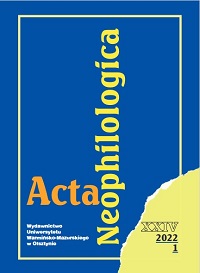Directionality and Productivity of Back-derivation as a Synchronic and Diachronic Process: Dictionary and Corpus Analysis
Directionality and Productivity of Back-derivation as a Synchronic and Diachronic Process: Dictionary and Corpus Analysis
Author(s): Grzegorz WlaźlakSubject(s): Language studies, Language and Literature Studies, Theoretical Linguistics, Philology
Published by: Wydawnictwo Uniwersytetu Warmińsko-Mazurskiego w Olsztynie
Keywords: back-derivation; directionality; productivity; orpus analysis
Summary/Abstract: Back-derivation is an example of a non-affixative word-forming process in which an affix is removed to create a semantically corresponding verb [Bauer, Lieber, Plague 2013, 280]. This common phenomenon in English mostly occurs in the area of lexis borrowed from classical languages. The author focuses on directionality as a diachronic problem, and productivity of the process in a synchronic perspective. In order to trace the phenomenon of directionality, material from the source languages is collected chronologically. As for the phenomenon of productivity, quantitative analysis is based on attestations in text corpora and dictionaries. The author examines occurrences of this mechanism and its influence with respect to the creation of similar forms in scientific and specialist language.
Journal: Acta Neophilologica
- Issue Year: 1/2022
- Issue No: XXIV
- Page Range: 111-122
- Page Count: 12
- Language: English

